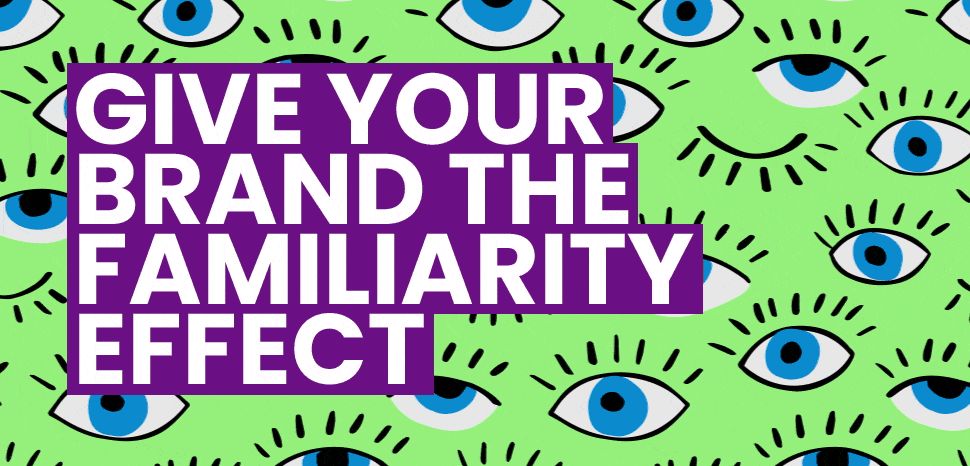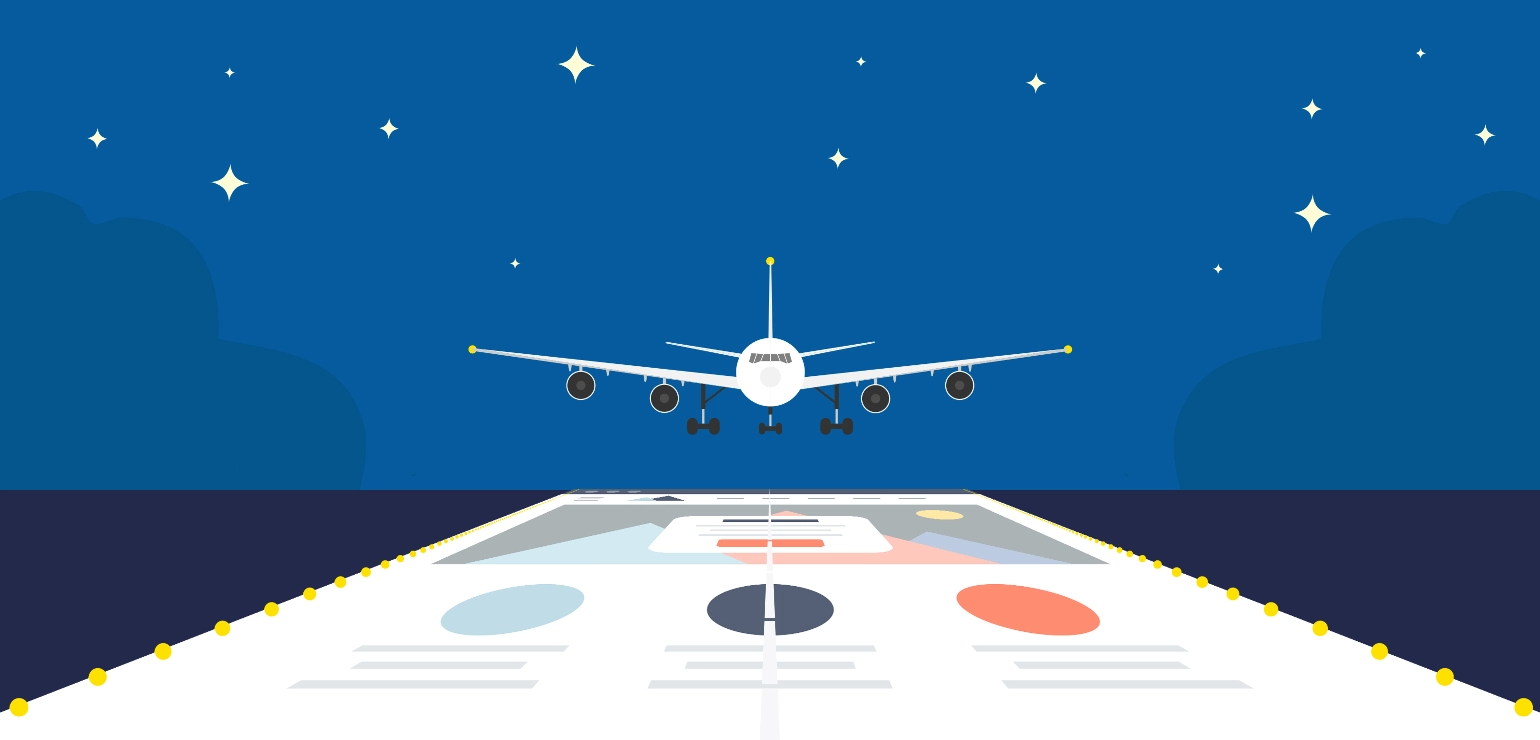The familiarity effect

Article topics
- What is the familiarity effect?
- Avoiding brand oversaturation
- Reduced cognitive load
- Positive association
- Logos
- Social proof
- Influencers
- User interface
- Final thought.
Ensuring that consumers are aware of your brand is as important as marketing your products and services to them. If consumers are already aware of your brand when they want to make a purchase, they’ll be more likely to buy from you.
Unconsciously we prefer what we’re familiar with—if something feels familiar, we are more comfortable with it. The more we experience something, the less likely we are to be challenged by it and the more likely we will be to associate positively with it. In psychology this is called the ‘mere exposure effect’. In eCommerce and marketing, it’s known as the ‘familiarity effect’.
What is the familiarity effect?
Have you ever heard a song for the first time and not been particularly taken with it? Or maybe it doesn’t register with you at all? Yet after hearing it a few times on the radio, while out shopping, or socialising, you begin to like it. That’s one way the familiarity effect works. Unconscious exposure over time can create a powerful preferences.
The familiarity effect is why some big brands use product placement in films and on TV shows, often spending millions getting their brand in front of the viewers (consumers) and, by association, project their brand as valuable or cool. The familiarity effect acts as a mental shortcut for decision making. It’s a significant factor that can influence which people you trust, which brands you become loyal to, and of course the music that you like.

Although there are many factors that contribute to a consumer’s decision to buy, the familiarity effect is a powerful technique to raise awareness of your brand and business, and to instil trust in potential customers, increasing the likelihood that your brand, product or service will be chosen over your competitors. In this article I will look at some of the factors that you can use to leverage the familiarity effect to help increase your brand exposure and lift sales.
In one consumer study 82% of participants selected brands they were familiar within a Google search, regardless of where it ranked on the SERP.
Avoiding brand oversaturation
For the familiarity effect to have positive impact, consumers should be regularly exposed to your brand, but without being over exposed—if consumers feel bombarded, or your marketing becomes intrusive, they will perceive your brand negatively. Tune your brand exposure for quality and relevance over quantity. Relevance is vital, as irrelevant consumer exposure to your brand is just noise.
Over exposure will alienating consumers. Balance and consistency are key. Spread your brand over different channels rather than only using marketing email or social media. Try influencers, affiliates, social proof and out-of-home collateral in brand-relevant, high footfall environments such as transport hubs or venues, timed for prime exposure.
This may take some trial and error, and perhaps A/B testing for optimisation, but given the potential returns, it’s worth exploring to find what works best for your brand and business to engage more consumers and increase conversion rates.
Brands that are consistently presented to consumers are 4 times more likely to experience brand visibility.
Reduced cognitive load
By exposing consumers to your brand without directly marketing your products or services to them helps reduce cognitive load. Cognitive load is the brain’s ability to process information at any given moment. For example, we’ve all experienced the frustration of streaming video when the playing time exceeds the download speed of the web connection, causing the video to buffer—the rotating circle over a frozen frame.
This is an apt metaphor for what happens when cognitive load is too high, when consumers are bombarded by a brand and they are unwilling to allocate the ‘bandwidth’ to engage with it, ‘buffering’ as they manage their cognitive load.
However, this can work in your favour. The human brain, unlike digital devices, has ways of coping to help reduce cognitive load. It takes shortcuts and fills in gaps using past experiences—often unconsciously—to inform a desired action in the present moment. One of the ways of making these connections is through the familiarity effect.
Take this example:
Your vacuum cleaner is broken so you want to buy a new one. You can’t remember when you last bought a new vacuum and have little idea what’s on the market today. What do you do? You probably head to Google to see what’s on offer and compare prices. And there it is. You have perhaps 20 vacuum cleaners to choose from in your price range. What do you do? Read through the specs for each one? Read the warranty information for each one? Well, some people might, but it’s fair to say that most consumers don’t have the time or the inclination (cognitive load) to dive that deep into vacuum cleaner research.
Out of the vacuum brands on offer it’s likely you will initially choose the one’s that you are most familiar with. How you became familiar with those brands might not be immediately apparent: could be those TV ads for Dyson or maybe your old vacuum was a Vax and had lasted 10 years, or maybe you know someone who’s happy with their Gtech. The recognisable brands will stand out, quite simply because they are familiar.
Positive association
Consider where you can place your brand to be particularly relevant to your target audience.
Positive association simply means placing your brand in another context that will form an association in a consumer’s mind (unconsciously) that previously did not exist. This can be seen for example in sports sponsorship. Football clubs have sponsors that are generally unconnected with football or sport at all. Yet some brands pay large amounts of money to have their name and logo on players’ shirts and placed around the ground. If the team is successful enough, the sponsoring brand will get exposure not only to fans in and around the stadium, they could also have TV exposure during match broadcast, post-match interviews and commentary, other livery and merchandise.

This kind of exposure isn’t just for big brands. Depending on your products or services you may be able to find other positive contexts with which to associate your brand: local sponsorship or relevant transport locations—a transport hub en route to an exhibition or event relevant to your sector, at community events, local TV, local celebrity association, local theatres or cinemas.
Logos
If your company is B2B, you should shout about the businesses and brands that you have worked with or supplied to, and those that use (or have used) your products or services, by including their logos on your website. If a potential client recognises just one logo then that could be enough to alleviate hesitation about them engaging with your business.
Another powerful way in which the familiarity effect works is at checkout (both B2B and B2C). If a potential customer arrives at checkout in your webstore and there are no security or payment method trust-logos, alarm bells will ring. Ensuring that you have, for example, Norton Secure or SSL Secure Connection and Visa, MasterCard, PayPal logos etc., will, because they are familiar, reassure purchasers that your cart is secure and trustworthy.

A Shopify study showed that almost 61% of purchasers didn’t finish their transaction because trust logos were missing.
Social proof
Other sources of positive association can be made via social media. Using the familiarity effect on social media is called social proof.
Familiarity can be transmitted between consumers. This transmission, or social proof, enables consumers who are perhaps undecided about which products or services to purchase gain greater knowledge from those consumers who have had positive experiences with that brand. Social proof is particularly powerful when a consumer gets it from a trusted source: colleagues, friends or family members.
Here’s an example:
Imagine that we are both in the same musicians’ Facebook group, and we have chatted and interacted together in that group before, and you are looking for a plugin to use with your DAW application that has realistic valve compression. You put a shout-out to the group and I reply and recommend the Fairchild 670, saying that I’ve used it for a while now and it’s a fantastic piece of kit. You’ve never heard of the Fairchild 670 before, but because someone you are familiar with recommended it, the likelihood of you considering it is significantly higher than if a complete stranger had made the recommendation.
The reason for this is simply trust. We are far more likely to trust a person or brand that is familiar to us compared with people and brands we do not know. There are many practical things you can do to help your webstore feel more familiar to consumers.
But social proof can also work the other way. If in the example somebody in the group had had a bad experience with the product, they may well have recommended that you don’t use it.
Remember, the familiarity effect is a double-edged sword. You want consumers to be familiar with your brand for positive reasons.
Influencers
Using a person who is respected in your business field or sector to endorse your products or services will help transmit familiarity by association. It doesn’t have to be a ‘famous’ person (macro-influencer).
As long as they are relevant to your sector and have a large following, they can help consumers trust your brand (micro-influencer). This is effective because the familiarity isn’t with your brand, it’s between the influencer and their audience. An influencer doesn’t have to actively endorse your brand, product or service. Associating with it is often enough to have a positive effect.
82% of consumers would follow a recommendation made by a micro-influencer.
Final thought
The familiarity effect can be a useful technique to persuade consumers to engage with your brand. But the risk of over-exposure must be considered. They say that familiarity breeds contempt (a cliché that we are all familiar with), yet it rings Truer than ever with the familiarity effect. But used skilfully as part of your overall marketing strategy, leveraging the familiarity effect can help your business increase brand awareness, driving conversion rates and lifting sales.
Could your website or webstore benefit from optimising the familiarity effect to gain traffic that’s more likely to convert? Why not get in touch with one of our eCommerce and digital design specialists today for a chat about how we can help your business grow?


 Back
Back
